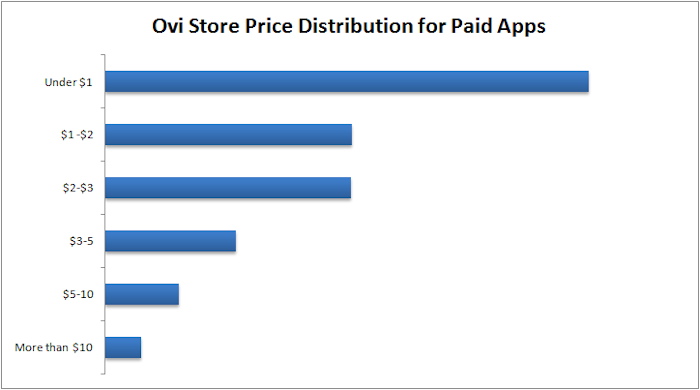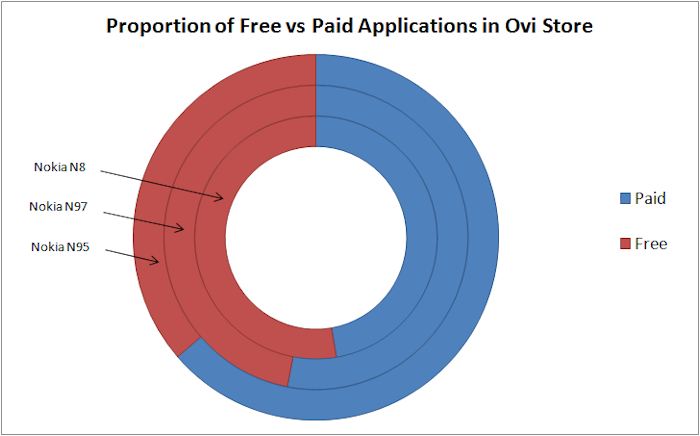“Show me the money.”
The classic quote from Jerry Maguire is apt in many circumstances, including the world of the modern software developer. No longer shackled by the need to pair up with a publishing house, the last five years have seen an explosion in developers targeting mobile platforms, including the smartphone space. While the large publishers like Electronic Arts and Ubisoft are still present, it's the smaller developers that are creating the headline titles for mobile platforms.
And very few people are going to develop just for a nice thank you email. They're developing as a job, a career, and a way to create income. How to get the most money out of your applications is becoming as relevant as any other part of the process – and arguably it's one of the key areas, because no money means no more applications in the future.
So over the next two months, All About Symbian, supported by inneractive, is going to look at the smartphone developer space and how to make the most of the financial opportunities presented.
While we're going to look at the monetary side of things, it goes without saying that you still need a good and solid application that people want. There's no point having the best advertising banner system or affiliate API usage if nobody plays “Mr Boring and the Wall of Wet Paint”, so we will skip over that tricky part of the design process, and look at what options you have bringing in some revenue.
It is important to decide how to make your money when you start to design the application. Look at one of the first real independent successes, Commander Keen, from ID software, on the PC. Distributed online, the first ten (of thirty) levels were made available to anyone who wanted to download the application. There were some restrictions, the more deadly weapons were left out and the range of monsters was not as large, but this was enough advertising to get people playing, and enough incentive for people to buy the full version.
This “shareware” model fuelled many a developer in the late nineties, including our own Steve Litchfield, with Fairway, Mapper and others. Coupled with the new distribution method of the internet, it was the basis of many businesses, and for many, the obvious starting point when creating applications is to go with the shareware model. People have an app experience that is free at the point of first download, and can pay to either unlock, or download the full version of a title.
We are currently in the era of the app store, with large central depositories of software, and this has resulted in some tweaks of the model, the main one being that trial versions of applications are rarely able to be upgraded from inside the application - hence the rise of each application having two versions in a store, the “lite” version (equivalent to the old trial versions) and the “full” version of the application, with all the features available.
This is still the dominant method of earning income from applications. It's an easy relationship to understand, the principle is understood in the marketplace, and all you need to do is have something that can showcase itself in the free/lite stage, but still keep the users engaged as they look for more features which are hopefully only available in the full version. You also need to find the balance point that gives you as much income as possible, without losing customers because of a high price.
All those options aside, it is a method that has been proven time and time again to be beneficial to the user and developer. But over the last few years the App Store option has resulted in a lot of competitive prices, and a tendency for the price to drop (the “race to zero”). Looking at the Ovi Store applications, around 40% of the paid applications now cost less than $1, and 91% cost less than $5:

Symbian devices only; from AAS Ovi Store Tracking - July 2011
This pattern is repeated over all the major smartphone platforms, and, although both Symbian and Windows Phone 7 have more price elasticity and variance, the general trend down is still visible:

Apps and Games content; from AAS Ovi Store Tracking - July 2011
This shows the increasing proportion of free content for more recent devices.
Given the App Store paradigm, it’s not a straightforward decision any more, with the issues over pricing, from getting your balance right and the constant lowering of the price that consumers will consider, making the model a little bit trickier to understand (and perhaps a little less profitable). And there is another option to consider - the Ad-supported application, which (while a relatively new model) does merit more investigation, which we'll be doing with inneractive, later on in this series.
While remaining free at the point of delivery, it also remains free to the user throughout the life of the application – at least in terms of buying the application. This is where the third potential income source comes in. (The first is the developer paying for it himself, either as a freeware release, or perhaps a marketing department has decided to commission the application; the second is the user pays, through the purchase of the application, be it buying a full copy, or a shareware upgrade, or any other retail strategy.)
The third way is one in which the connected smartphone can excel. Getting a third party to pay the developer for an interaction with the user – not just banner advertising, but areas such as in-app purchases of virtual goods, pay per download for extra features, and affiliate marketing.
There is no right or wrong answer when determining which of these to use – each method has benefits and drawbacks. Keep those in mind and you should be able to make an educated decision as to which to use in your applications.
We're going to look at all these approaches (especially having the user pay or leveraging advertising to bring in revenue) over the next few articles. We'll also be looking at some applications that have implemented successful strategies to monetise their applications.
'Supported content' series, in conjunction with a third party, allow us to explore topics in more detail than would otherwise be possible. Typically, this is for topics that have a smaller audience than our usual content.
In supported content series, All About Symbian retains full editorial control, with each part written and edited by the AAS team.


